Van Gogh. Self Portraits – The Courtauld, London
A review of Van Gogh. Self Portraits, the exhibition which reopens London’s Courtauld Gallery after a well-timed refurbishment. With a brief note on how that refurbishment is looking as well!
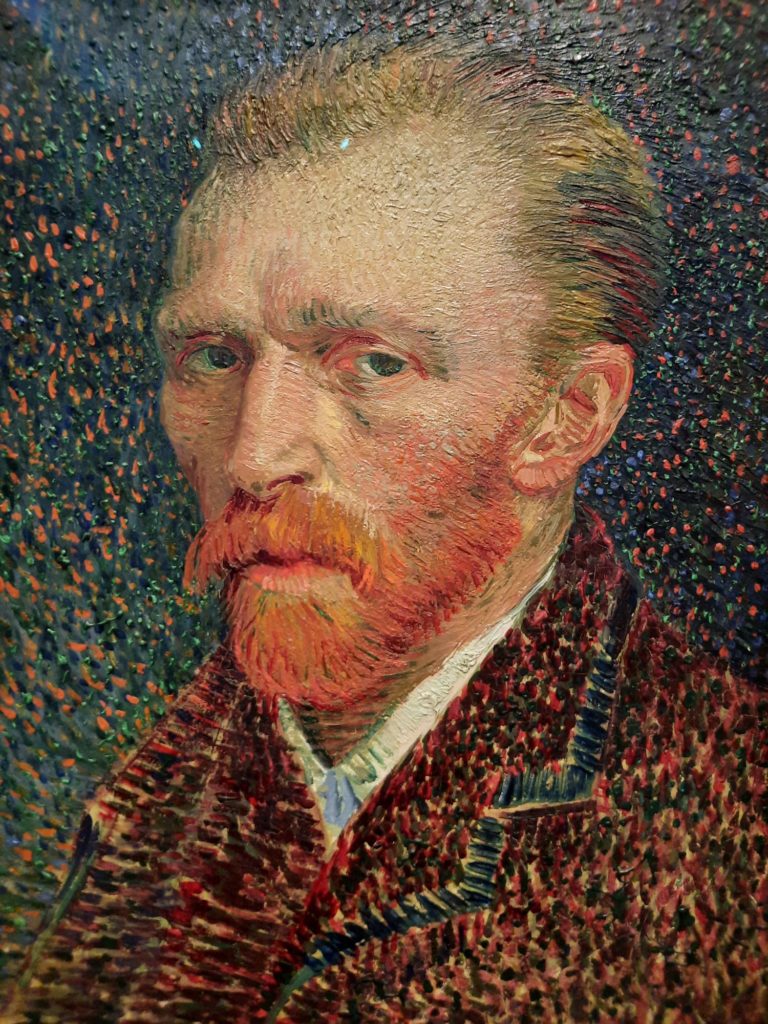
Van Gogh. Self Portraits
On the surface, this is a very simple exhibition which does what it says on the tin. Self portraits. By Vincent Van Gogh. The Courtauld holds a famous one in its collection, Self-Portrait with Bandaged Ear of 1889. This is the starting point for bringing together 16 of the artist’s self portraits, spanning the full range. Early/late. Traditional/experimental. 37 of his self portraits survive in total (I’ve also read 35), so 16 is not an insignificant grouping.
This is also an exhibition which was destined to be right up my street. I’ve spoken before about how I tend to prefer small, focused exhibitions rather than sweeping retrospectives. I was somehow a little surprised when I saw how small this exhibition is (just two rooms). I shouldn’t have been really, and actually it was perfect. Visitors can truly take their time, take in each work, stop and notice the details.
I love to look at the rake of the light over a painting’s surface, and who better than Van Gogh for that? And I also love to pay attention to where loans have travelled from for an exhibition – a clue to the work behind the scenes to pull something together. As you might expect, the labels in Van Gogh. Self Portraits are like a who’s who of heavy hitters in the museum world. A blissful opportunity to see them all together. Let’s have a look then in a little more detail, at the paintings and the way the Courtauld have subtly reframed the narrative around Van Gogh’s self portraiture.

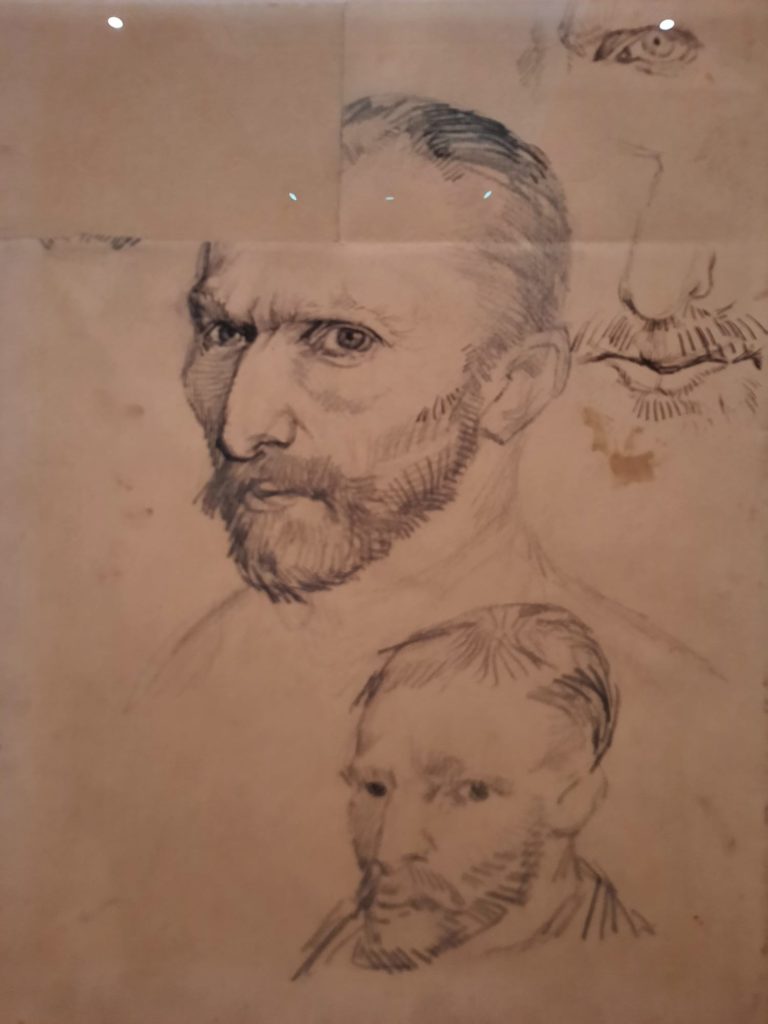

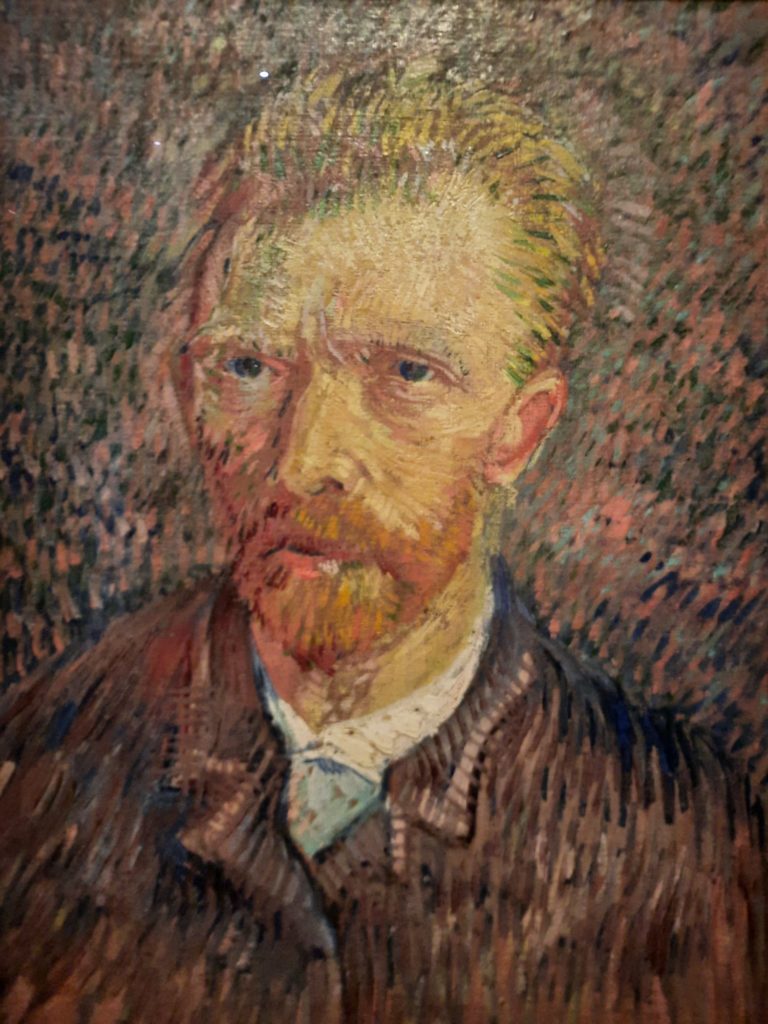


Artist – Know Thyself
More than perhaps any other artist, there is a strong popular culture narrative around Vincent Van Gogh. We all know his story – his struggle to support himself as an artist, his even greater struggle with mental health. The happy period with Gauguin in the South of France. The happy period ending in discord. A disfigured ear. Time in an asylum and an unhappy ending. Van Gogh is the epitome of the tortured artist; this is part of the reason for the popularity of his works at auction and in museums. It’s also why even replicas of his paintings are a crowd-pleaser.
Van Gogh. Self Portraits asks us to take a step back from this. Can we assume that all of these 37 works were a troubled artist attempting to work through his pain, to give us a glimpse into his soul? Frankly, no. There are many reasons for an artist to undertake a self-portrait. First and foremost, all you need is a mirror and you have a free model permanently on hand. The other reasons put forward by the Courtauld are: an outlet for experimenting with new styles; a critical tool for psychological introspection; a means of constructing his own identity.
The labels accompanying each self portrait outline how they connect to these artistic purposes. Van Gogh presents himself in middle class garb here, in an artist’s smock there. We can see him encounter and respond to pointillism. Van Gogh felt portraiture to be the highest ambition of a painter, the proof that an artist could go beyond the possibilities of photography and likeness to capture the essence of a person. The paintings on display here support this manifesto.

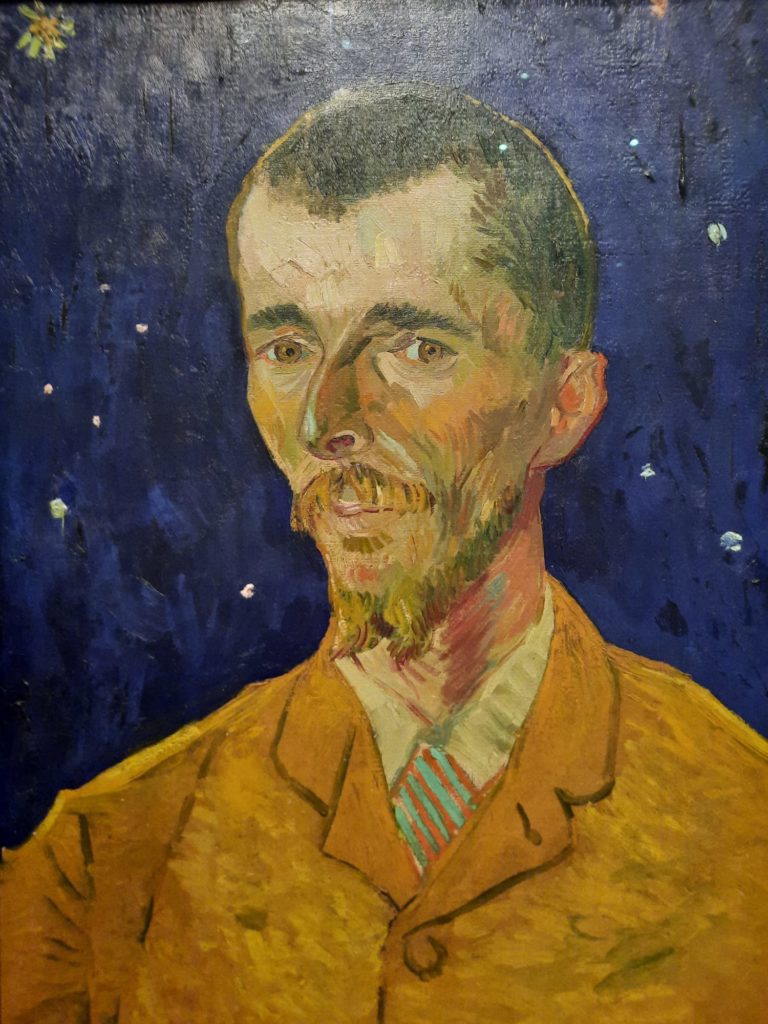

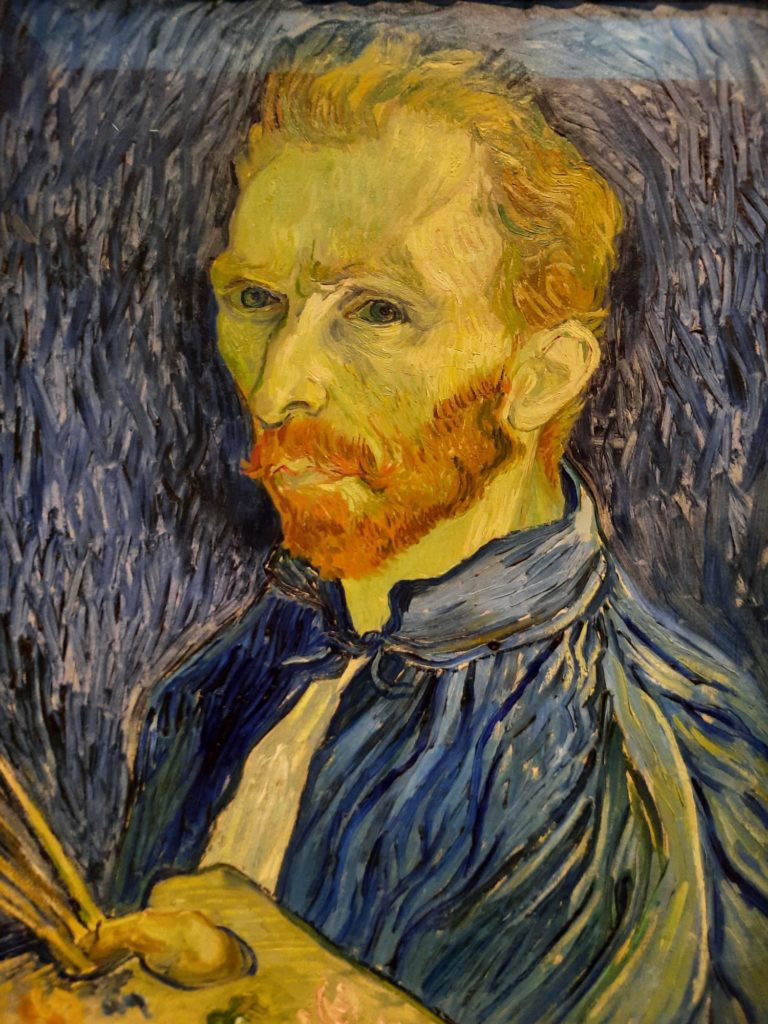
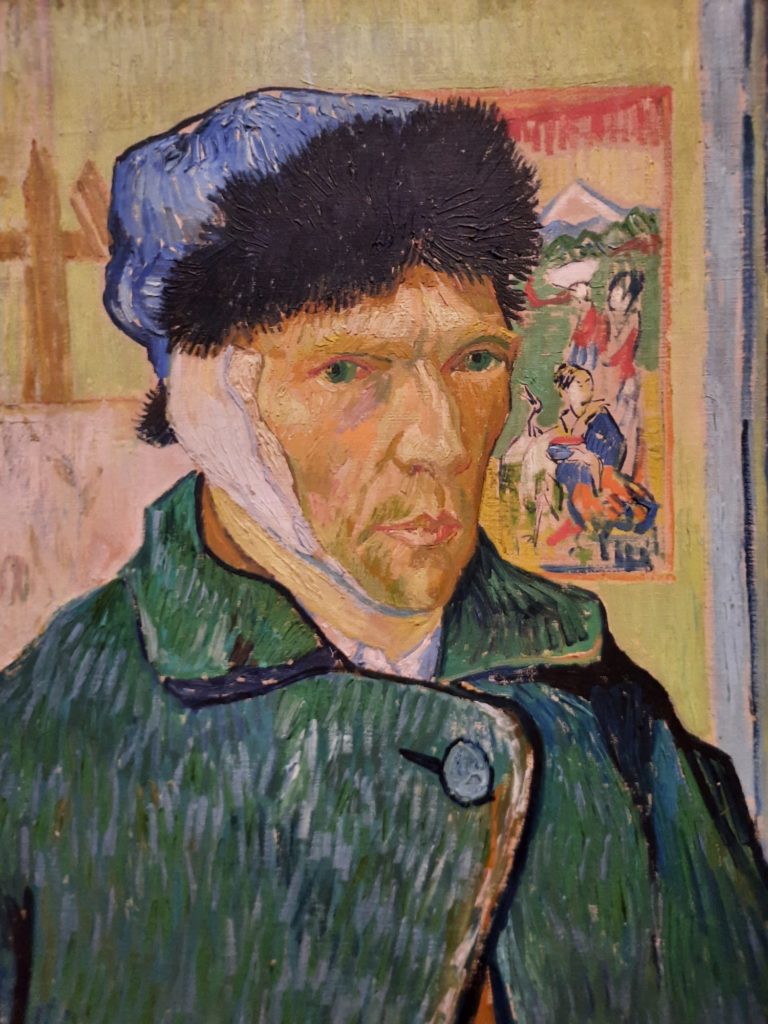
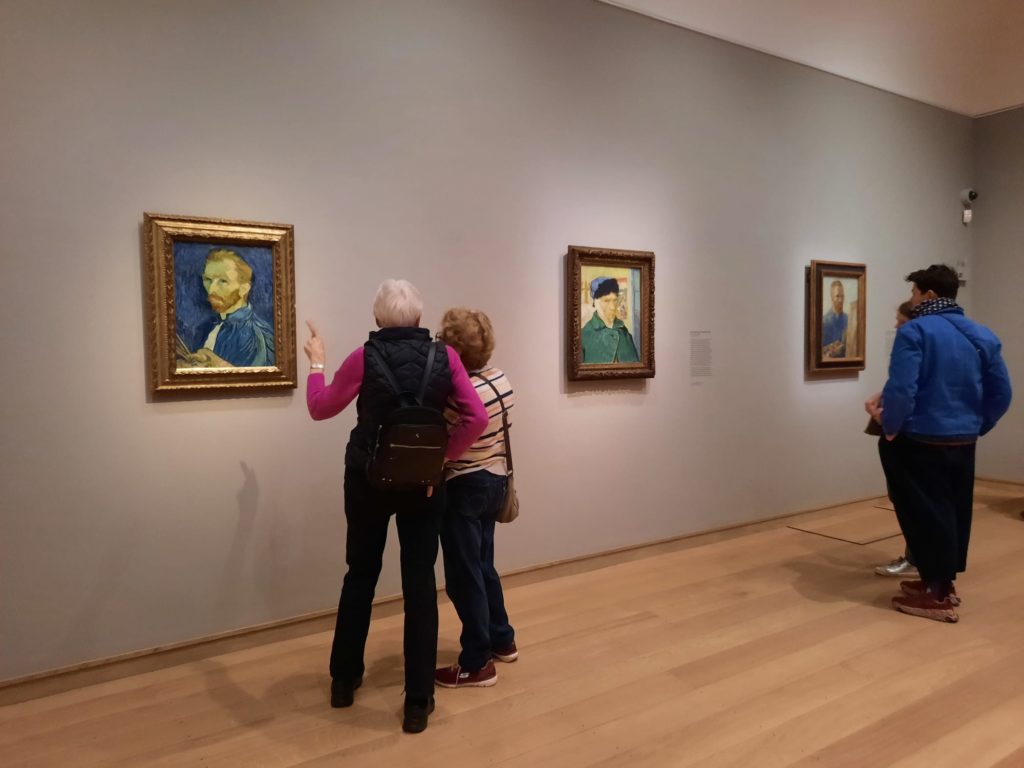
Dialogue Between Paintings
The wonderful thing about Van Gogh. Self Portraits is that, by hanging so many self portraits together, we can really understand Van Gogh better as an artist. There are paintings here which haven’t been seen together since they were in his studio. And it’s astonishing the differences in style, tone and mood between works created mere days apart. Without being able to compare and contrast in real time it’s hard to get a sense of this variety rather than seeing his style as a progression over time.
Compared to the more popular Van Gogh exhibitions popping up everywhere like mushrooms, Van Gogh. Self Portraits is naturally a very different beast. By selecting a group of works, rejecting the ‘tortured artist’ narrative as the impetus behind them, and assessing them against the various reasons that any artist creates self portraits, we are encouraged to see Van Gogh and his works in a new light. His thoughtful and well-researched approach, his skill, and his passion for a job done well. This is not to disavow his very serious challenges with mental health, but to provide some balance.
Overall I really enjoyed this gem of an exhibition. It is well-curated and insightful, and very well presented. And as I said at the outset, the scale makes it easy to take your time and really consider the paintings in front of you. A marvellous way to reopen the Courtauld and well worth trying to get your hands on a ticket.
Salterton Arts Review’s rating: 5/5
Van Gogh. Self Portraits on until 8 May 2022
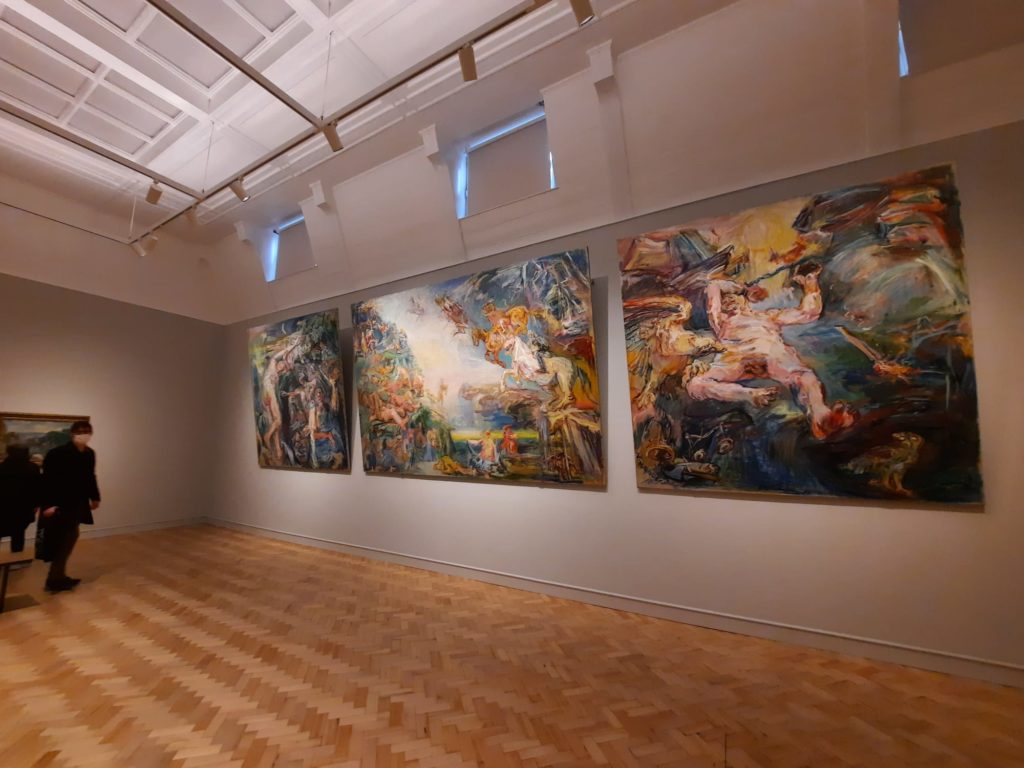
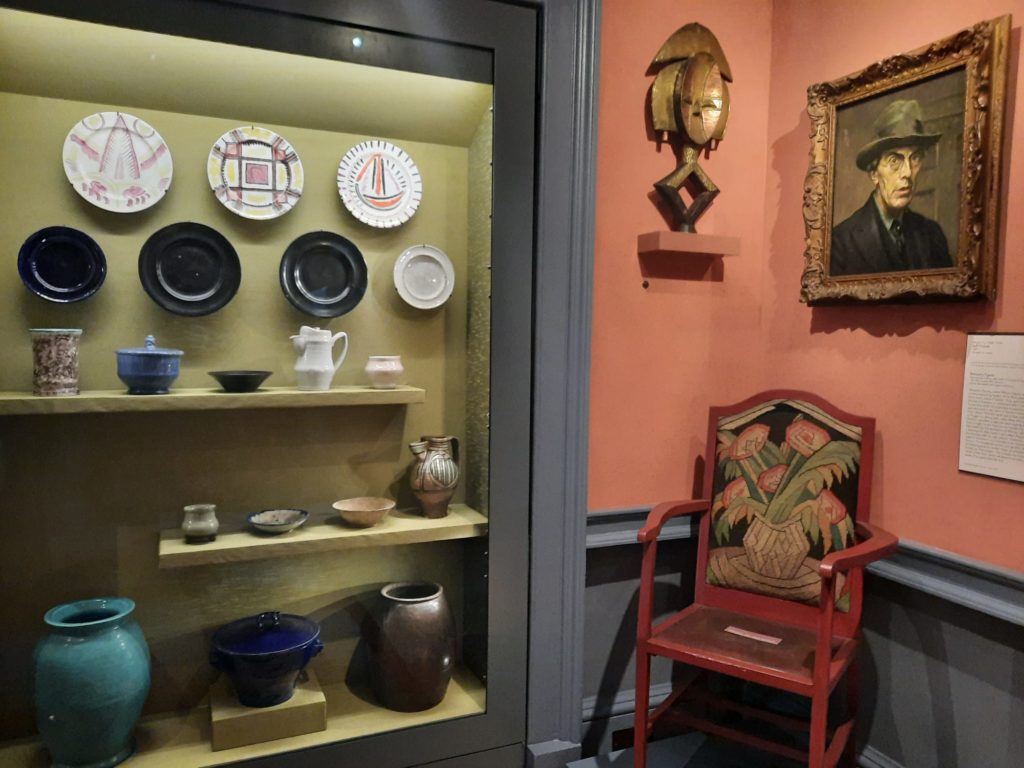
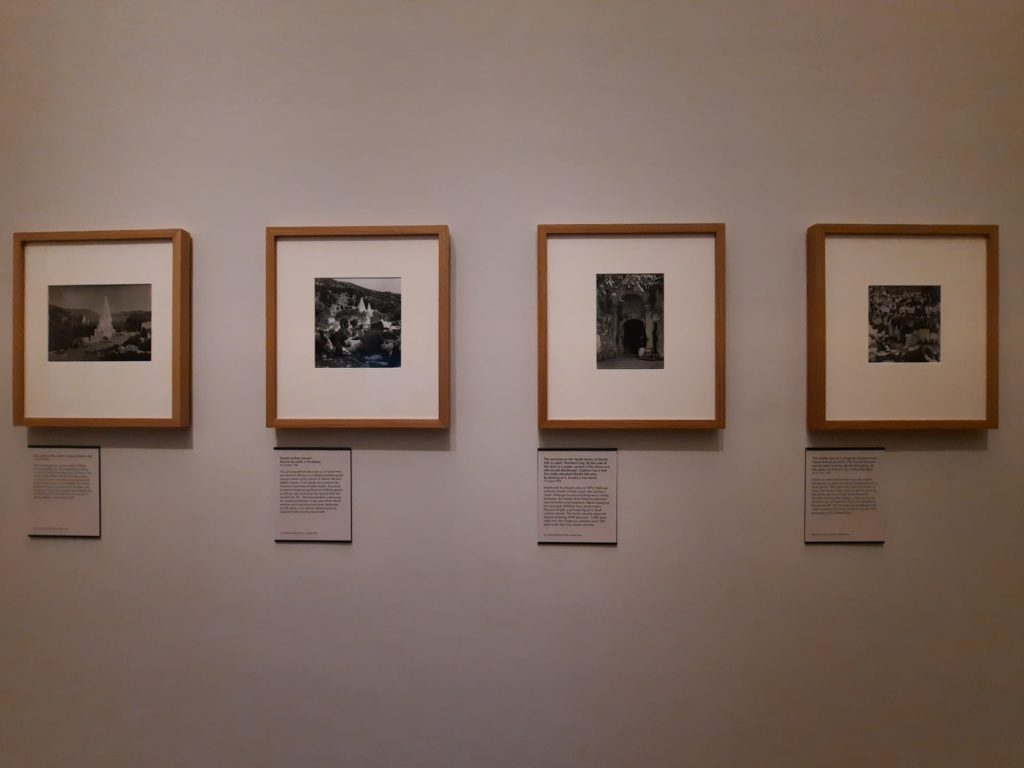
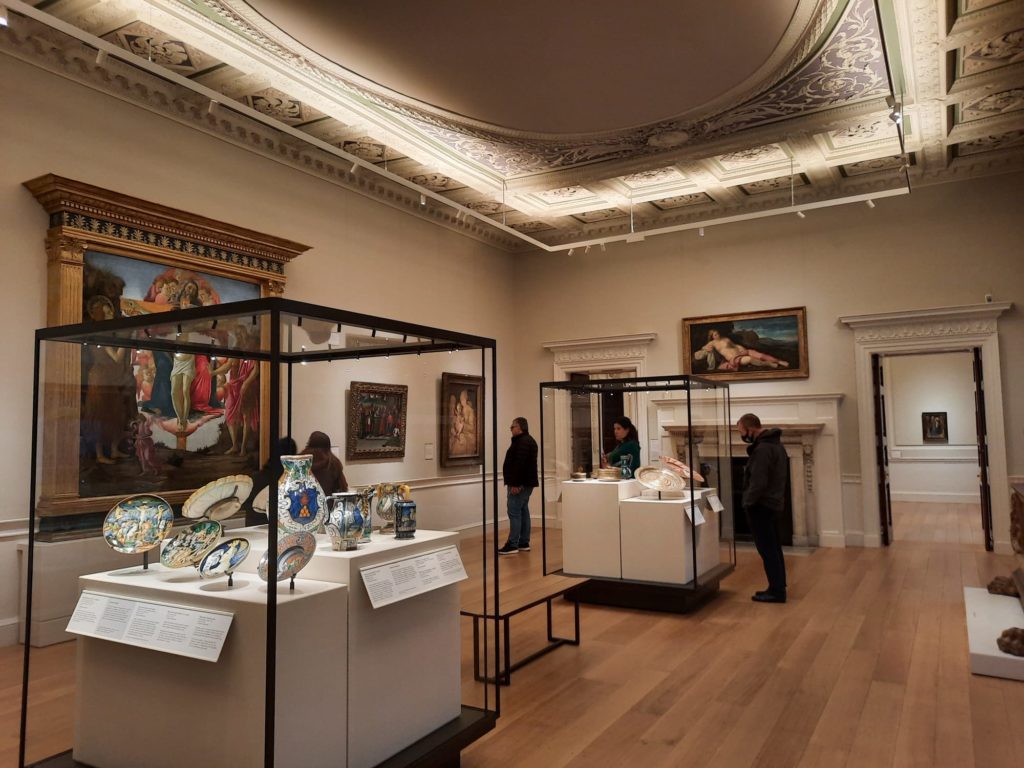
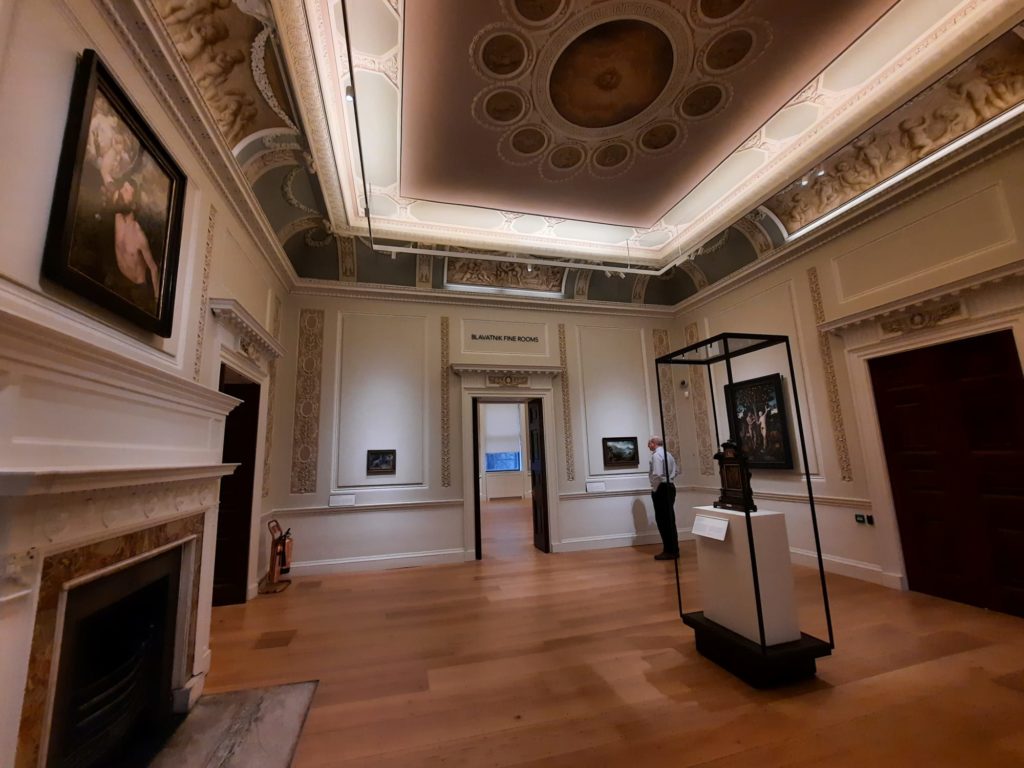
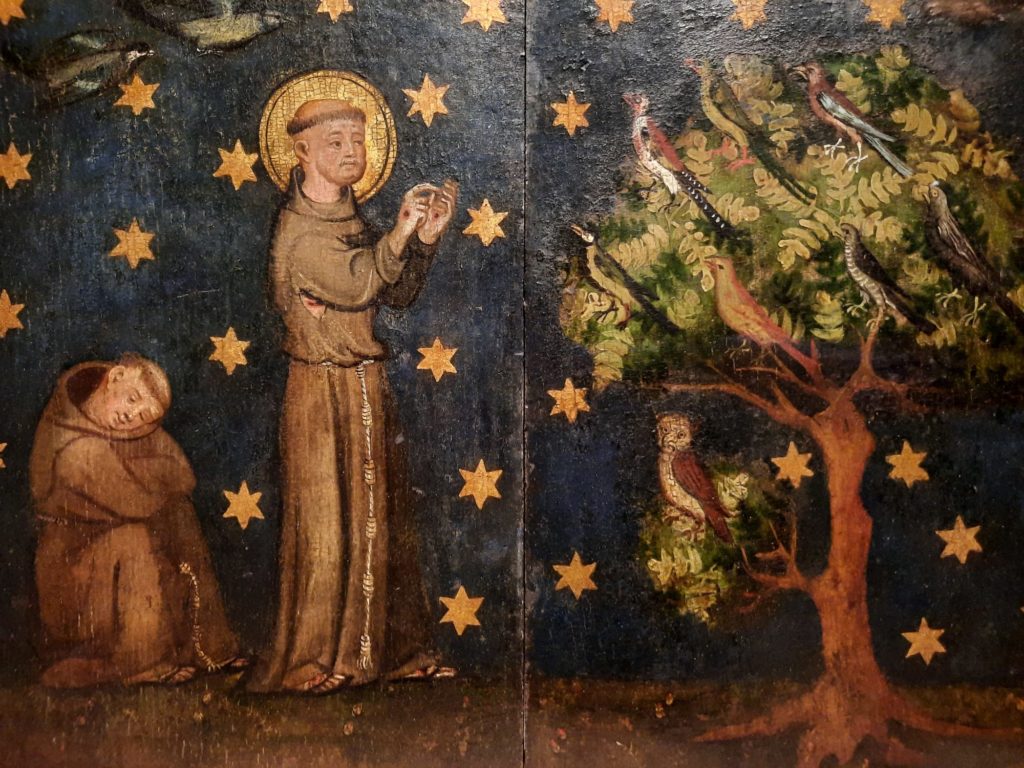
And What About The Courtauld?
It would be remiss of me to post this review without a quick mention of how the Courtauld is looking! With good timing only matched by the National Portrait Gallery who did the same thing, the Courtauld closed in 2018 for major renovations and reopened last November. After seeing Van Gogh. Self Portraits, my museum-going partner and I made our way down the building to see what the changes are.
I am probably not alone in saying that, as it had been a while since I had been to the Courtauld Gallery, I couldn’t quite remember what it looked like before. But it is certainly looking nice now. The changes are subtle rather than revolutionary, but everything is perfect. Beautiful flooring, decorative ceilings painted in lovely soft shades. There are a couple of additional (small) exhibition spaces – I liked the exhibition of 1940s photographs of Kurdistan (closes 30 May 2022). There’s also an intriguing one-room display on the Bloomsbury Group.
Fundamentally the Courtauld is still doing what it’s best at. It has a good collection which is not comprehensive but has definite highlights – mainly Impressionist and early Italian. They are now shown off to great effect, and the Gallery is presumably set up to today’s highest technical standards. The cafe over the other side of the portico is also worth a look. A great place to chat about what you’ve seen over coffee and cake.
If I could comment on one very specific thing, it would be that, in the post-Impressionist gallery, Gauguin’s highly skilled marble portrait of his wife Mette is positioned to face directly his painting Nevermore, which includes a portrait of his shockingly young Tahitian ‘wife’ Pahura. The Courtauld are very upfront about the troubling dynamics of gender, race, exploitation and the White male gaze, but it nonetheless feels like it’s not the spot Mette would have wanted to occupy in perpetuity. Or Pahura, for that matter.
If you see this after your page is loaded completely, leafletJS files are missing.

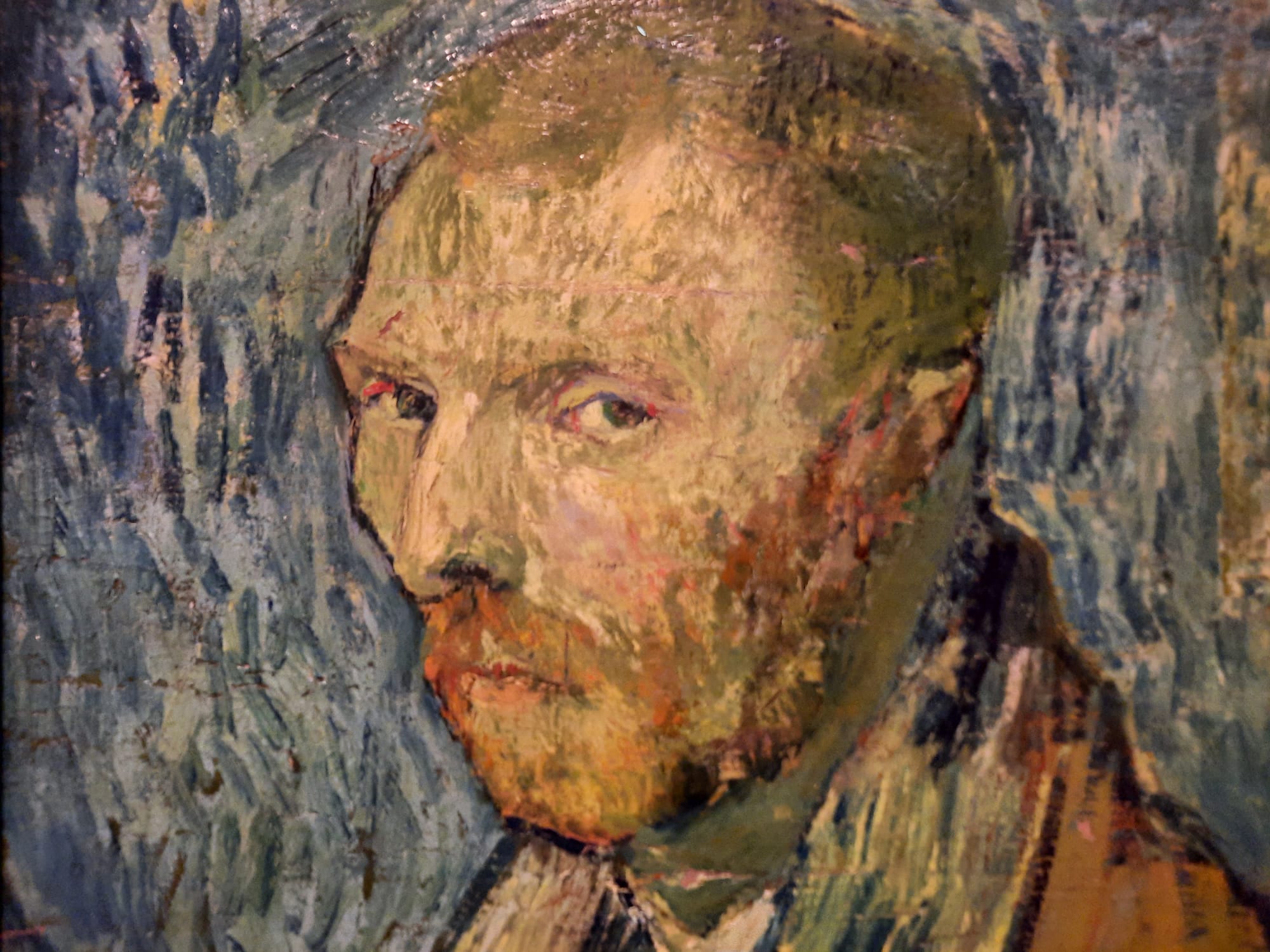
2 thoughts on “Van Gogh. Self Portraits – The Courtauld, London”